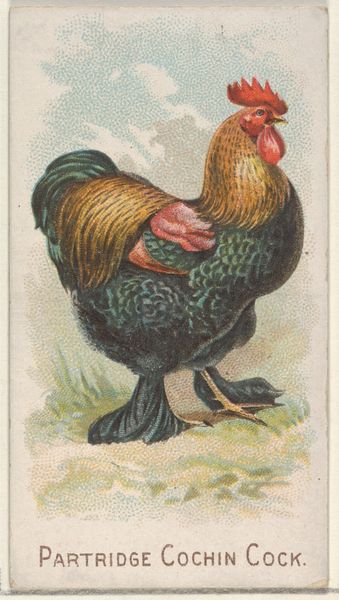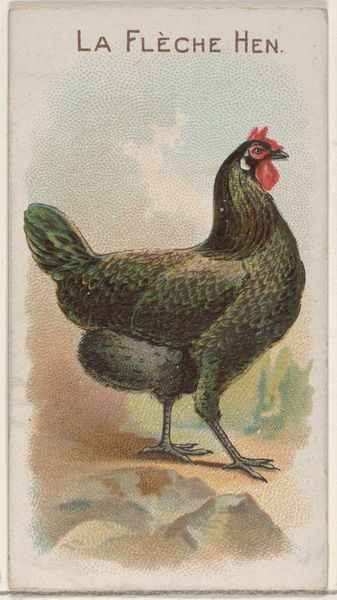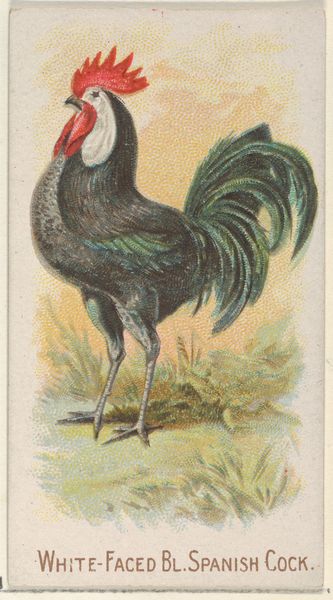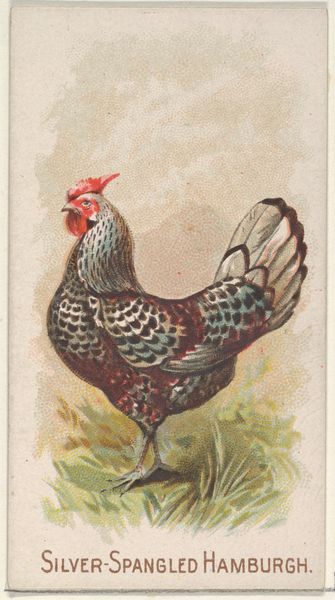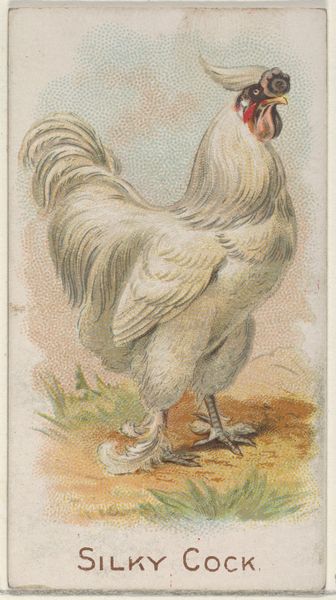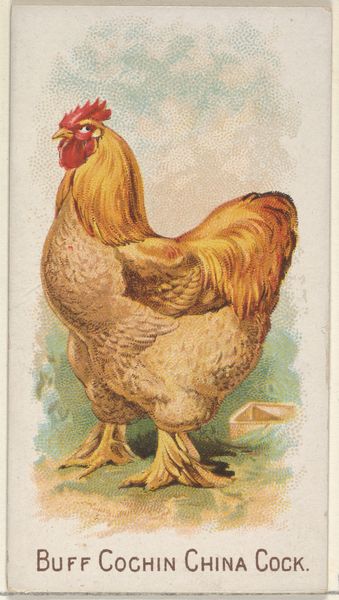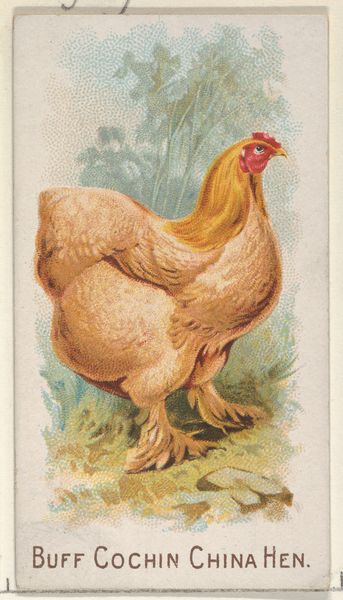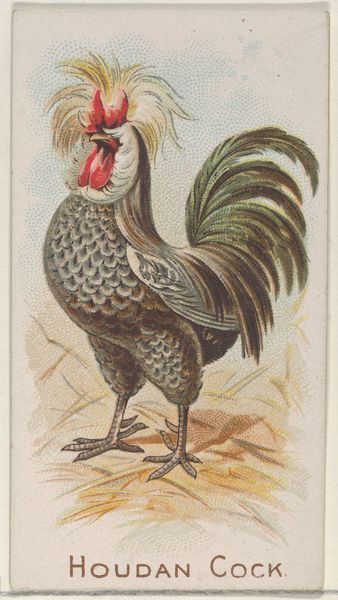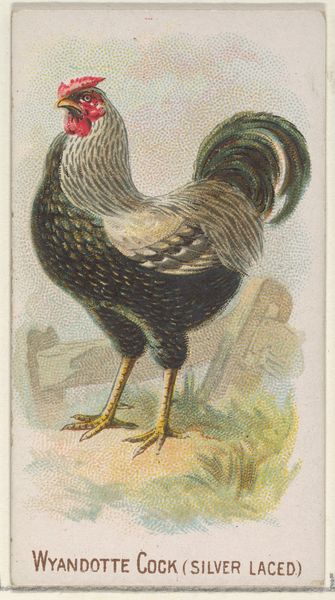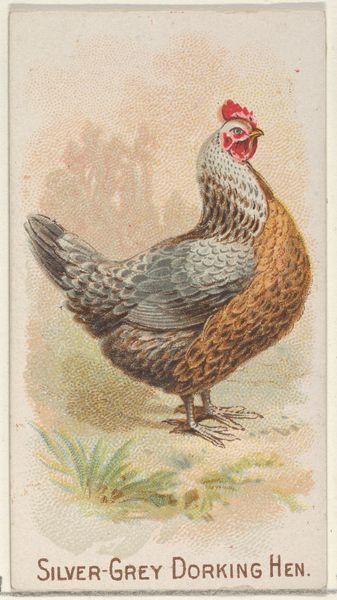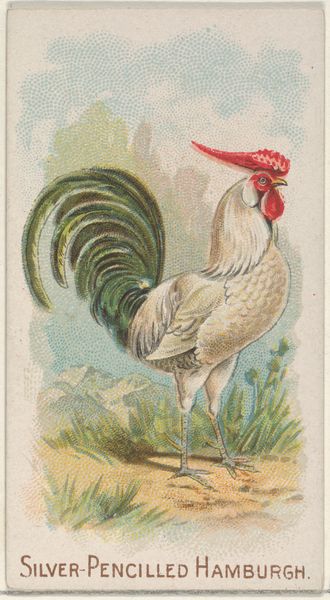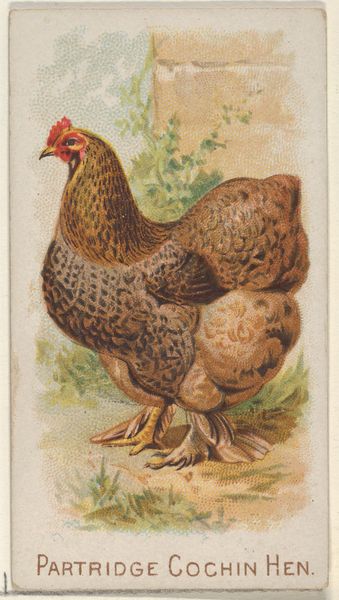
Langshan, from the Prize and Game Chickens series (N20) for Allen & Ginter Cigarettes 1891
0:00
0:00
drawing, coloured-pencil, print
#
drawing
#
coloured-pencil
# print
#
coloured pencil
#
naive art
Dimensions: Sheet: 2 3/4 x 1 1/2 in. (7 x 3.8 cm)
Copyright: Public Domain
Editor: This is "Langshan, from the Prize and Game Chickens series," a coloured-pencil drawing printed in 1891 by Allen & Ginter. It's a somewhat odd portrayal of a proud rooster. I'm intrigued by how something as humble as a chicken could become an object of value, appearing on collectible cards. What’s your perspective on it? Curator: It's precisely that tension – the elevation of the everyday – that demands our attention. Consider the socio-economic context: this card, distributed with cigarettes, catered to a burgeoning consumer culture obsessed with classification and display. What does it mean to 'collect' and categorize breeds of chickens in the late 19th century? Think about Darwin's influence and the rise of eugenics; this wasn’t just about appreciating poultry; it was about reinforcing societal hierarchies, mapping out distinctions and supposed perfections, linking cultural attitudes with the developing field of biology. What hierarchies of taste might these cards reveal? Editor: So, the focus isn't solely on the beauty of the Langshan rooster itself. The image itself appears almost naive. Curator: Indeed. Its naive aesthetic reinforces the seemingly 'natural' order being presented. Who decides what traits are prized, and what unspoken assumptions lie beneath that judgment? What gendered aspects are being highlighted, and how would it relate to the predominantly male consumption of these cards? Editor: It's fascinating how this simple image reflects a wider cultural landscape. I hadn't considered the connection between these cards and societal hierarchies. Curator: Exactly! It reminds us to constantly question the narratives behind seemingly innocuous objects. It has been interesting thinking about class, gender, and evolving scientific perceptions.
Comments
No comments
Be the first to comment and join the conversation on the ultimate creative platform.
